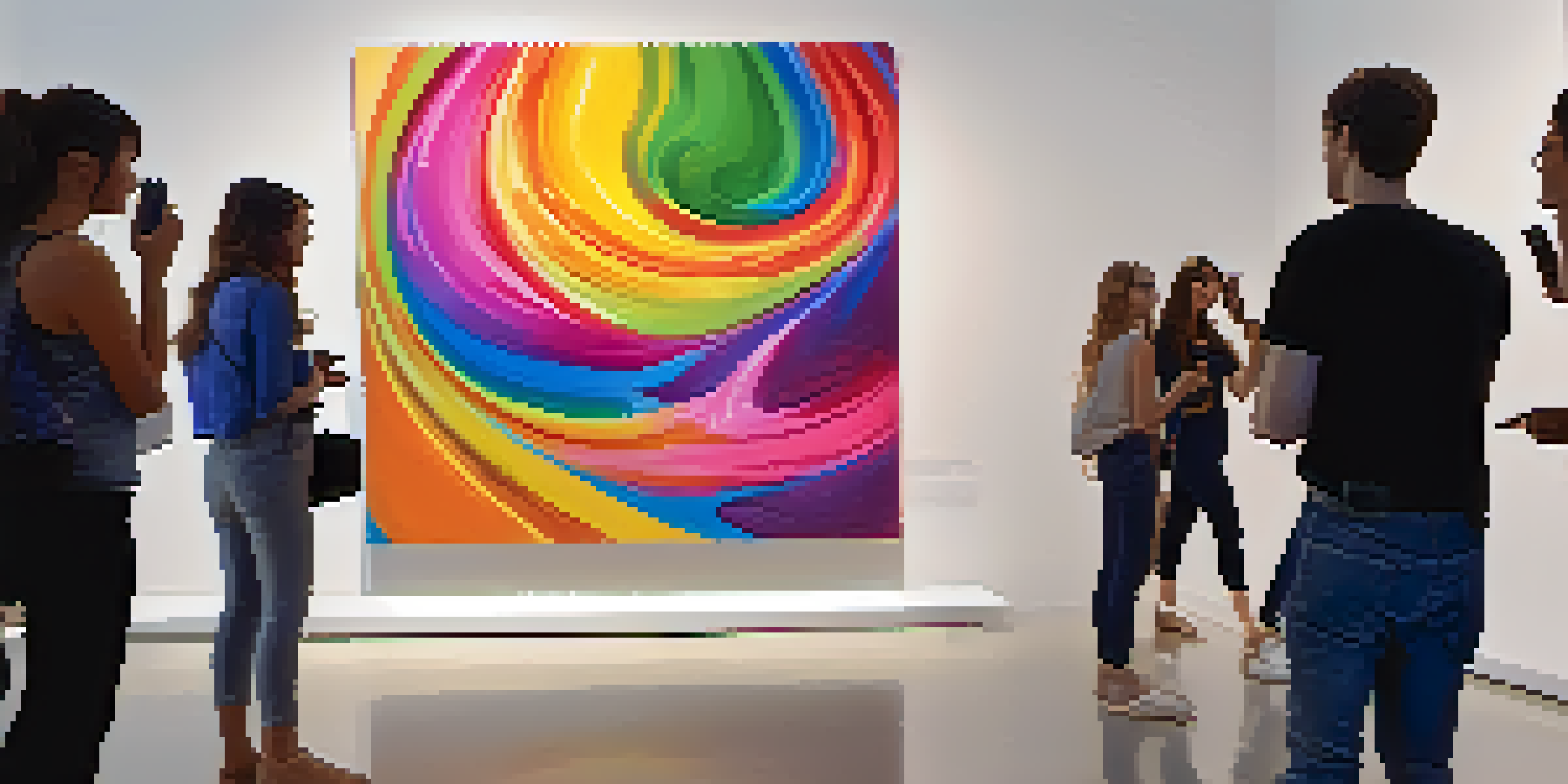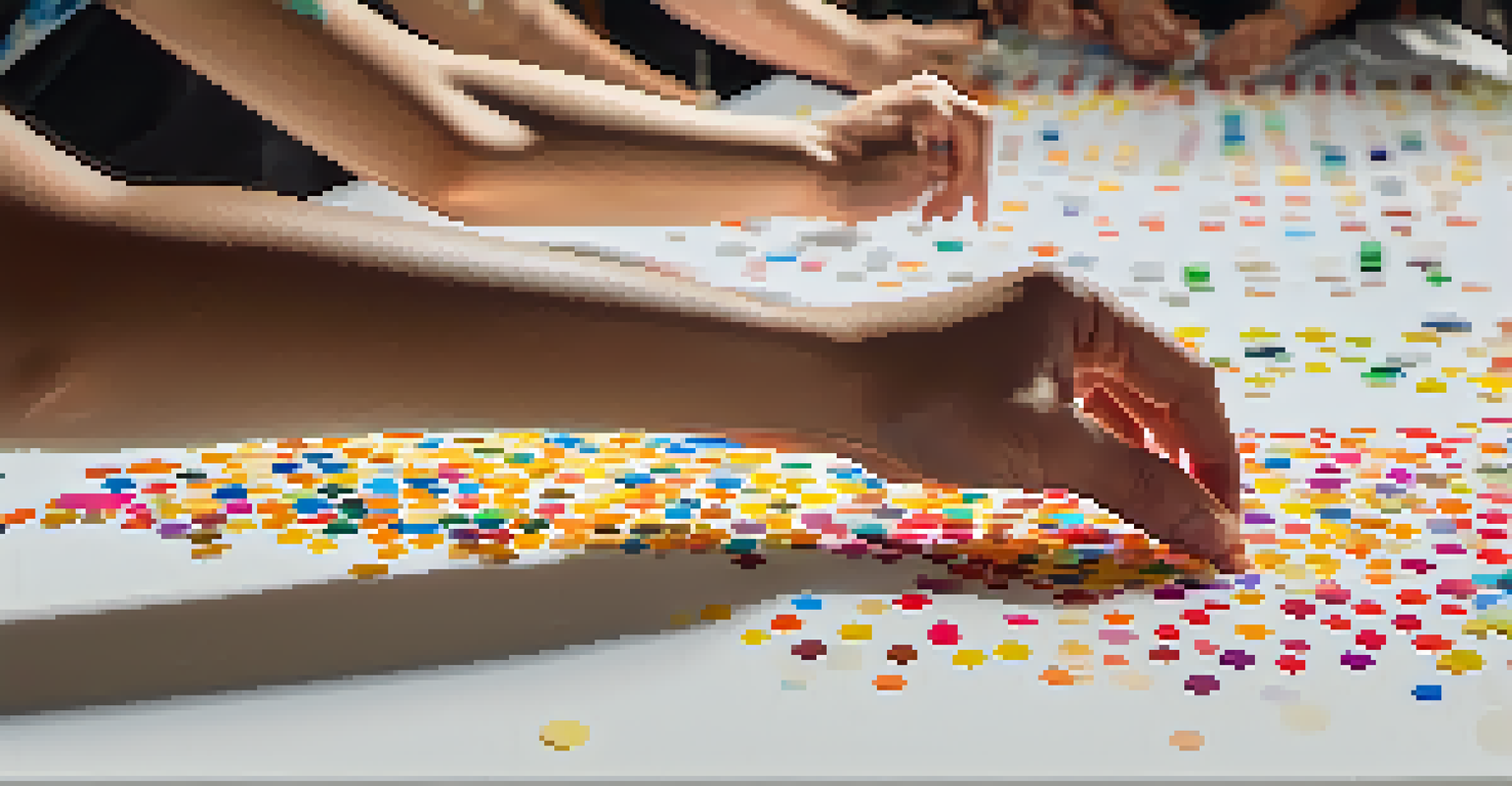Interactive Paintings: Engaging Audiences with Technology

What Are Interactive Paintings and Why Do They Matter?
Interactive paintings are artworks that invite viewers to engage with them in a dynamic way. Unlike traditional paintings that offer a passive experience, these artworks often incorporate technology, allowing the audience to influence or change the piece. This engagement fosters a deeper connection between the artwork and the observer, making art feel more alive and relevant.
Art is not a thing; it is a way.
For example, some interactive paintings use augmented reality (AR) to enhance the viewing experience. When viewers use a smartphone or tablet, they can see additional layers of content, animations, or even hear sounds that complement the artwork. This type of interaction not only captivates audiences but also encourages them to take a more active role in their art experience.
Ultimately, the rise of interactive paintings reflects a broader trend in the art world where technology is becoming an integral part of creative expression. As artists explore new mediums, they are finding innovative ways to engage audiences, making art accessible and enjoyable for all.
The Role of Technology in Interactive Art
Technology plays a crucial role in the evolution of interactive paintings. From simple touch screens to complex software that tracks viewer movements, these tools allow artists to create immersive experiences. By utilizing sensors and digital interfaces, artists can respond to viewer interactions in real time, transforming a static painting into a vibrant dialogue.

For instance, a painting might change color or form when someone approaches it, creating a sense of wonder and surprise. This interactivity not only captivates the audience but also encourages them to explore and discover the artwork in a personal way. The use of technology breaks down barriers, making art more approachable and engaging.
Interactive Art Invites Engagement
Interactive paintings transform passive viewers into active participants, fostering deeper connections with the artwork.
Moreover, technology facilitates collaborations across disciplines, blending art with science and engineering. Artists are now teaming up with technologists to push the boundaries of what art can be, resulting in innovative pieces that challenge the conventional understanding of art and its role in society.
Examples of Engaging Interactive Paintings
One standout example of interactive painting is the work of artist team Studio Drift, who created 'Drifter,' which combines art and technology to explore themes of freedom and movement. Viewers can control the motion of kinetic sculptures through their smartphones, merging their actions with the artwork's physical presence. This piece exemplifies how interactive elements can evoke emotional responses and create memorable experiences.
The best way to predict the future is to create it.
Another notable project is 'The Obliteration Room' by Yayoi Kusama, where visitors are invited to cover a completely white room with colorful dot stickers. While not a painting in the traditional sense, the transformation of the space becomes a living artwork, reflecting the collective contributions of its participants. This fosters a sense of community and shared creativity, showcasing the power of interaction.
These examples highlight how interactive paintings can engage audiences in unexpected ways, prompting reflection and dialogue. By inviting spectators to take part in the artistic process, these works challenge the notion of the artist as the sole creator and embrace a more collaborative approach.
The Impact of Interactive Paintings on Audience Engagement
Interactive paintings significantly impact audience engagement by transforming passive viewers into active participants. This shift encourages deeper connections with the artwork, as viewers begin to see themselves as part of the creative process. With each interaction, they become co-creators, enriching their experience and understanding of the piece.
Additionally, these immersive experiences can attract a more diverse audience, including those who might not typically visit art galleries. Families, tech enthusiasts, and younger generations are drawn to the dynamic nature of interactive art, making it a powerful tool for reaching new demographics. This inclusivity helps foster a broader appreciation for the arts.
Technology Enhances Artistic Expression
The integration of technology in art allows for immersive experiences that challenge traditional boundaries of creativity.
Furthermore, the engagement inspired by interactive paintings often leads to social sharing and discussions. As visitors share their experiences on social media platforms, they help spread awareness and interest in the artwork, creating a ripple effect that can boost attendance and appreciation for the arts overall.
Challenges in Creating Interactive Paintings
Despite the exciting possibilities, creating interactive paintings comes with its own set of challenges. Artists must balance the integration of technology with the artistic vision, ensuring that the interactive elements enhance rather than detract from the artwork. This requires a thoughtful design process and collaboration with tech experts to create a seamless experience.
Moreover, the technical aspects can be daunting for some artists, particularly those who are traditionally trained. Learning new software, coding, and hardware integration can feel overwhelming, potentially discouraging them from exploring this medium. However, many organizations and workshops are emerging to support artists in overcoming these hurdles.
Lastly, there’s the issue of sustainability and maintenance. Interactive installations often require ongoing technical support and updates, which can be resource-intensive. Artists and galleries must consider these factors when planning their projects to ensure they remain engaging and functional over time.
The Future of Interactive Paintings
The future of interactive paintings is incredibly promising, with technology continuously evolving and enhancing creative possibilities. As virtual and augmented reality become more accessible, we can expect to see even more innovative uses of these technologies in art. Artists will have the opportunity to create experiences that were once unimaginable, pushing the boundaries of how we perceive art.
Moreover, the increasing integration of artificial intelligence (AI) in art could lead to new forms of interactive experiences. Imagine a painting that learns from viewer interactions, adapting its visuals or themes based on audience reactions. This level of personalization could create a unique experience for each visitor, making art feel even more relevant and engaging.
Future of Art Is Collaborative
As interactive paintings evolve, they promote community and collaboration, making art more accessible and relatable to diverse audiences.
As we look ahead, interactive paintings are likely to play a significant role in art education as well. By providing hands-on, engaging experiences, these artworks can inspire a new generation of artists and art lovers who value creativity and experimentation. The future of interactive art is bright, and it promises to enrich our cultural landscape in exciting ways.
Conclusion: Embracing the Interactive Art Movement
The rise of interactive paintings represents a significant shift in the art world, blending creativity with technology to engage audiences on a deeper level. As we’ve explored, these artworks not only invite participation but also foster community and collaboration, creating shared experiences that are both memorable and meaningful. This movement challenges traditional notions of art and its role in society, making it more accessible to all.
By embracing interactive art, we open ourselves up to a world of possibilities where viewers become active contributors to the artistic process. This approach not only enriches the experience for individuals but also helps build a more inclusive art community. As technology continues to advance, we can look forward to even more innovative and engaging artistic expressions.

Ultimately, interactive paintings remind us that art is not just something to be observed but also something to be experienced and felt. As we celebrate this fusion of art and technology, we invite everyone to explore the world of interactive art and discover the joy of engaging with creativity in new and exciting ways.